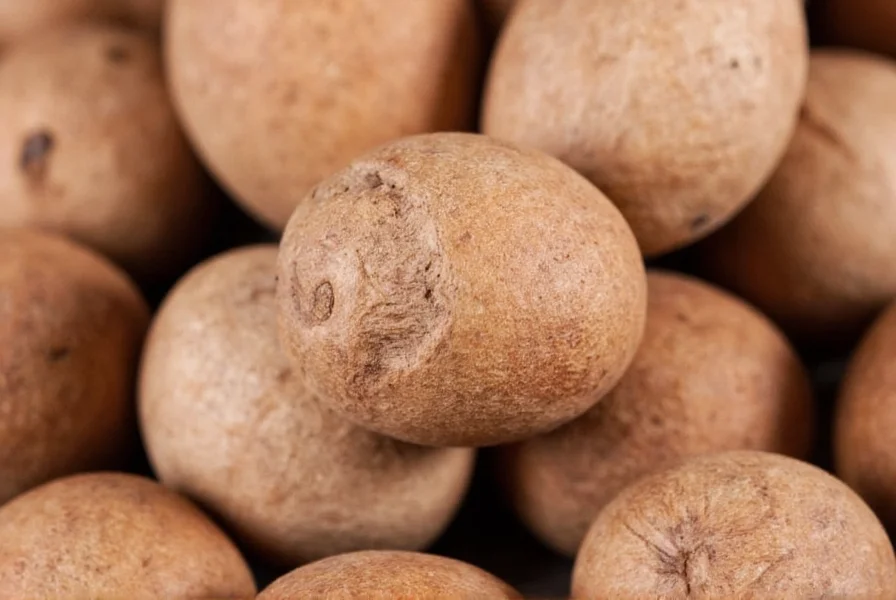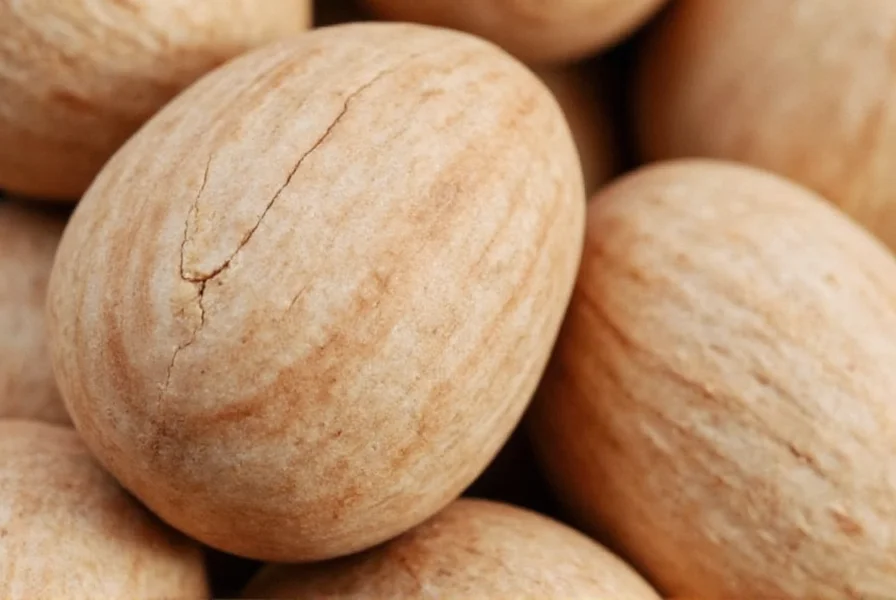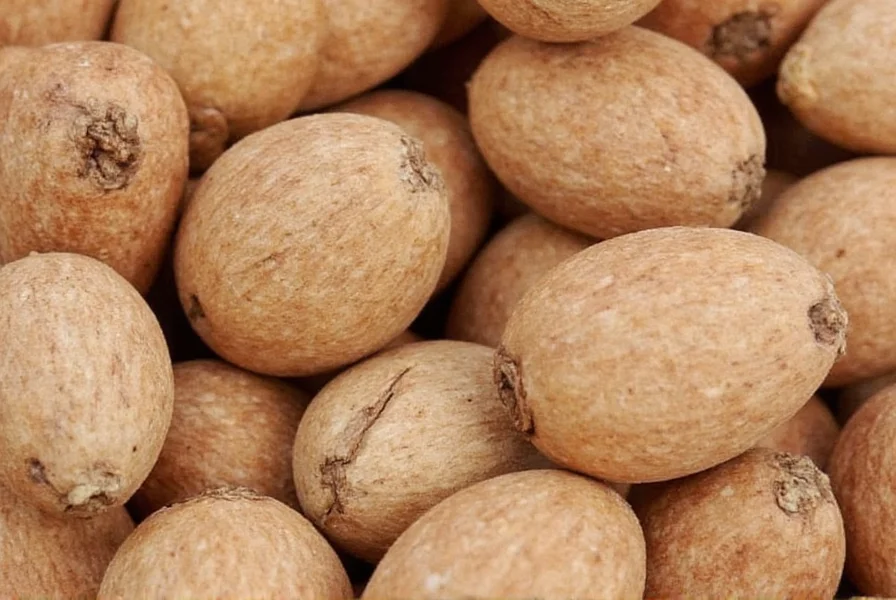Nutmeg has journeyed from its remote Indonesian origins to become a staple in kitchens worldwide. This remarkable spice transforms ordinary dishes into extraordinary culinary experiences while offering surprising nutritional properties. Understanding how to select, store, and use nutmeg properly unlocks its full potential in your cooking.
Botanical Background and Origins
Nutmeg comes from Myristica fragrans, an evergreen tree reaching 20 meters in height that thrives in tropical climates. Each fruit contains a single seed surrounded by a lacy red membrane—this is mace, nutmeg's flavorful cousin. The Banda Islands in Indonesia's Maluku archipelago remain the historical heartland of nutmeg production, though today major cultivation occurs in Grenada, India, and Malaysia.
What many don't realize is that nutmeg and mace come from the same fruit. The seed becomes nutmeg after drying for several weeks, while the aril surrounding it becomes mace. This dual-spice characteristic makes Myristica fragrans uniquely valuable among spice plants.
Historical Significance and Global Journey
Nutmeg's history reads like an adventure novel. Arab traders controlled the nutmeg trade for centuries, spreading tales of mythical birds carrying the precious spice to protect their monopoly. When Europeans discovered the Banda Islands in the 16th century, nutmeg became worth its weight in gold. The Dutch went to extraordinary lengths to maintain control, even exchanging the island of Run for Manhattan in 1667.
The spice's perceived medicinal properties fueled its value. During medieval times, physicians prescribed nutmeg as protection against the plague. Its warming properties made it particularly valuable in colder European climates where fresh spices were scarce.
Culinary Applications and Flavor Profile
Nutmeg's warm, nutty flavor with subtle sweetness enhances both sweet and savory dishes. Professional chefs consistently prefer freshly grated whole nutmeg over pre-ground versions because the essential oils responsible for its distinctive aroma dissipate quickly after grinding.
| Dish Type | Recommended Nutmeg Amount | Best Application Method |
|---|---|---|
| Cream sauces | 1/8 teaspoon per cup | Grate directly into warm sauce |
| Baked goods | 1/4 teaspoon per recipe | Mix with dry ingredients |
| Vegetable dishes | Pinch per serving | Finish with fresh grating |
| Beverages | Small pinch | Garnish with fresh grating |
When working with nutmeg in cooking, remember that less is more. Its flavor intensifies during cooking, and excessive amounts can make dishes bitter. The spice pairs exceptionally well with dairy, root vegetables, and winter squash. For holiday baking, freshly grated nutmeg transforms ordinary pumpkin pie or eggnog into memorable culinary experiences.

Nutritional Benefits and Scientific Research
Nutmeg contains several bioactive compounds including myristicin, elemicin, and safrole. These essential oils contribute to both its distinctive flavor and potential health benefits. One teaspoon (2 grams) of ground nutmeg provides:
- 25 calories
- 2 grams dietary fiber
- Significant manganese (20% of daily value)
- Moderate copper and magnesium
- Trace amounts of iron and calcium
Research suggests nutmeg may support digestive health by stimulating gastric enzyme secretion. Its anti-inflammatory properties show promise in preliminary studies, though more human research is needed. The spice's magnesium content contributes to healthy nerve function, while manganese supports bone health.
Proper Selection and Storage Techniques
For optimal flavor, always choose whole nutmeg over pre-ground versions. Look for plump, hard seeds with a rich brown color and no cracks. Properly stored whole nutmeg maintains its potency for 2-3 years, while ground nutmeg loses flavor within 6-12 months.
Store nutmeg in an airtight container away from light and heat. Many chefs recommend keeping a small grater dedicated to nutmeg to avoid flavor transfer from other spices. When grating, use a fine microplane for the best results—this extracts maximum flavor while preventing bitter notes from the seed's outer layer.

Safety Considerations and Proper Usage
While culinary amounts of nutmeg are perfectly safe, consuming large quantities can cause adverse effects. Myristicin, the compound responsible for nutmeg's distinctive flavor, can produce hallucinogenic effects in doses exceeding 5 grams (about 1-2 whole seeds). Symptoms of nutmeg toxicity include:
- Dry mouth and throat
- Nausea and vomiting
- Increased heart rate
- Disorientation
- Delirium in extreme cases
For safe consumption, limit nutmeg to culinary amounts—typically no more than 1/4 teaspoon per serving. Pregnant women should avoid medicinal quantities but can safely use nutmeg as a spice in normal cooking amounts. Those taking certain medications, particularly MAO inhibitors, should consult their healthcare provider about potential interactions.
Frequently Asked Questions
What's the difference between nutmeg and mace?
Nutmeg is the seed of the Myristica fragrans tree, while mace is the lacy red membrane (aril) surrounding the seed. Mace has a more delicate, citrusy flavor compared to nutmeg's warm, nutty profile. Both spices come from the same fruit but offer distinct culinary applications.
Can I substitute ground nutmeg for whole nutmeg?
Yes, but with flavor considerations. One whole nutmeg seed equals approximately 2 teaspoons of ground nutmeg. However, freshly grated whole nutmeg contains more essential oils and delivers superior flavor compared to pre-ground versions, which lose potency quickly.
How can I tell if my nutmeg has gone bad?
Fresh nutmeg should have a strong, warm aroma when grated. If your nutmeg no longer smells distinctive or produces little flavor when used, it has likely lost its potency. Whole nutmeg lasts 2-3 years when stored properly, while ground nutmeg typically remains flavorful for 6-12 months.
Is nutmeg safe for children?
Yes, nutmeg is safe for children in normal culinary amounts used in cooking and baking. However, parents should avoid giving children medicinal doses of nutmeg, as the myristicin content can cause adverse effects in larger quantities. Stick to typical recipe amounts for family meals.
What are traditional medicinal uses of nutmeg?
Traditional medicine systems have used nutmeg for digestive issues, insomnia, and pain relief. Some cultures apply nutmeg oil topically for toothaches or muscle pain. While modern research shows potential benefits, always consult healthcare professionals before using nutmeg for medicinal purposes rather than culinary use.











 浙公网安备
33010002000092号
浙公网安备
33010002000092号 浙B2-20120091-4
浙B2-20120091-4